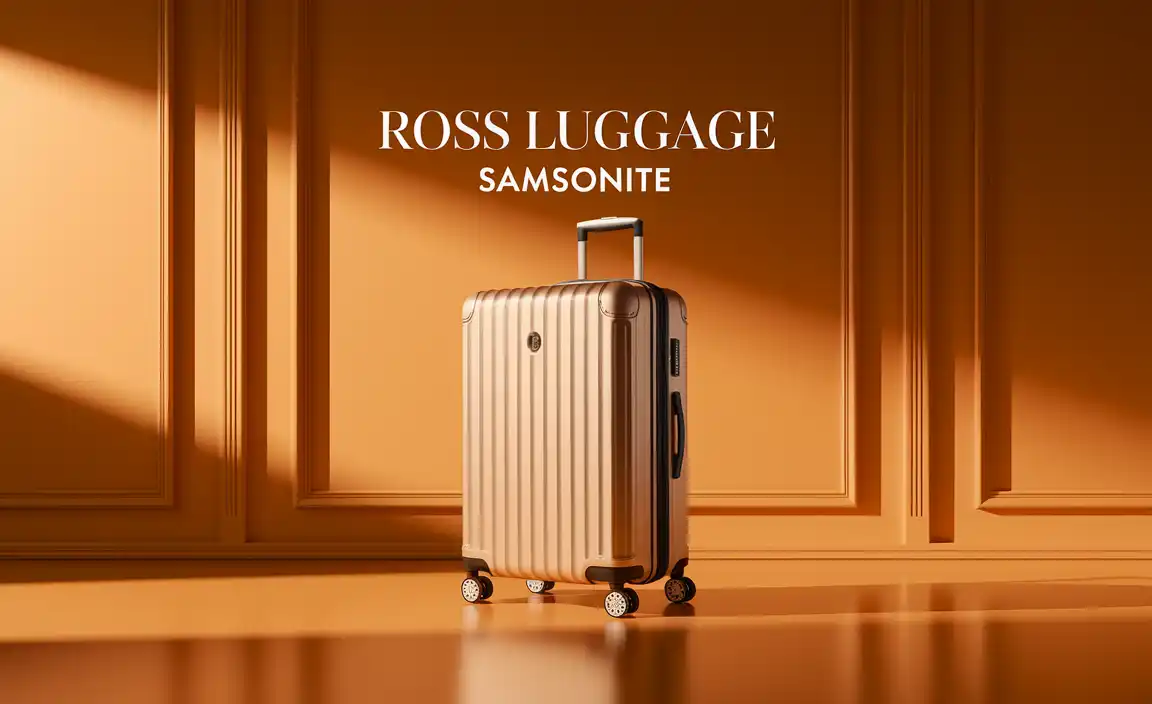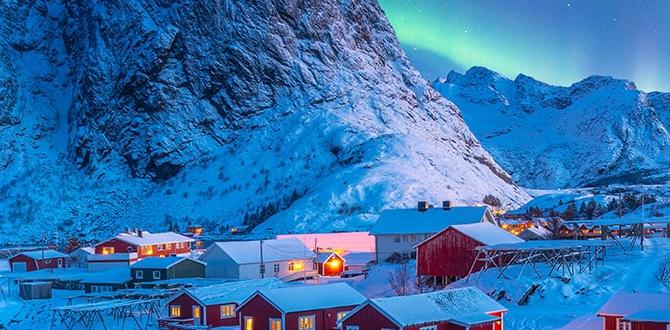Planning a winter trip to Beirut? This guide covers everything from packing light for mild temperatures to exploring vibrant souks and enjoying cozy cafes. Discover how to make your Beirut winter adventure comfortable and memorable.
Thinking about visiting Beirut when the weather gets cooler? Many people picture Mediterranean cities as exclusively summer destinations. But Beirut in winter offers a unique charm, often with fewer crowds and a cozy atmosphere.
However, packing right and knowing what to expect can make all the difference. If you’re wondering how to navigate Beirut during the winter months without feeling unprepared, you’re in the right place. This guide is designed to break down all your winter travel needs, from clothing to activities, ensuring a smooth and enjoyable experience.
We’ll walk you through everything you need to know, from the basics of Beirut’s winter climate to specific tips on what to pack. Get ready to discover the magic of Beirut off-season!
Quick Summary: Beirut Winter Trip Guide
A Beirut winter trip guide ensures you pack smart for mild, sometimes rainy weather, enjoy indoor attractions like museums and cafes, and embrace the city’s vibrant cultural scene. Expect comfortable temperatures perfect for exploring, fewer tourists, and delicious seasonal food. Be prepared for occasional rain showers and pack layers for flexibility.
Why Visit Beirut in Winter?
While many flock to Beirut during the sun-drenched summer months, visiting in winter presents a distinct set of advantages. The bustling summer energy settles into a more relaxed, intimate vibe during the cooler months. You’ll find that accommodation and flight prices can often be more budget-friendly, and popular attractions are less crowded. This allows for a more immersive experience with the city’s rich culture and history.
The Mediterranean climate in Beirut during winter is typically mild. While you won’t be basking on the beach, you can comfortably explore the city’s streets, historical sites, and culinary delights. The air is fresh, and the city often displays a different kind of beauty, with the scent of rain occasionally perfuming the air and bringing a unique atmosphere to its vibrant streets.
Understanding Beirut Winter Weather
Beirut’s winter season generally runs from December to February, and sometimes extends into early March. Unlike many European cities, you won’t typically encounter snow or freezing temperatures. Instead, expect a climate that is cool and often damp.
Average temperatures hover between 10°C (50°F) and 17°C (63°F). While sunny days are definitely possible, it’s crucial to be prepared for rainfall. Winter is Beirut’s wettest season, so rain showers are common, ranging from light drizzles to more substantial downpours.
Wind can also be a factor, especially near the coast, so layering is key to staying comfortable. Understanding these weather patterns will help you pack appropriately and plan your itinerary to maximize enjoyment, rain or shine.
Average Winter Temperatures and Rainfall
Here’s a general idea of what to expect:
| Month | Average High (°C / °F) | Average Low (°C / °F) | Average Rainfall (mm) |
|---|---|---|---|
| December | 17°C / 63°F | 11°C / 52°F | 100 mm |
| January | 15°C / 59°F | 9°C / 48°F | 120 mm |
| February | 16°C / 61°F | 10°C / 50°F | 90 mm |
Source: General climate data for Beirut. Please check a reliable meteorological source closer to your travel dates for the most accurate forecasts.
Packing Essentials for Your Beirut Winter Trip
The secret to a comfortable winter trip to Beirut lies in smart packing. Layering is your best friend. You want to be able to add or remove clothing as the temperature fluctuates throughout the day or as you move between different environments.
Think versatile pieces that can be mixed and matched. Opt for fabrics that are easy to care for and dry relatively quickly, in case of unexpected dampness. Comfort is paramount, especially if you plan on extended exploration. Consider practical accessories that enhance your experience and bring peace of mind, particularly if traveling with family or managing personal care needs.
Clothing Recommendations
Here’s a breakdown of what to pack in your suitcase:
- Tops: Pack a mix of long-sleeved shirts, sweaters, and a light to medium-weight jacket. A fleece or a down vest can also be great for layering.
- Bottoms: Jeans or comfortable trousers are ideal. Consider a pair of water-resistant pants if you plan extensive outdoor activities or are particularly sensitive to rain.
- Outerwear: Essential is a waterproof or water-resistant jacket with a hood. A trench coat or a stylish waterproof parka works well.
- Footwear: Comfortable, closed-toe shoes are a must. Look for water-resistant or waterproof options, such as sturdy walking shoes or ankle boots. Avoid open-toed sandals or anything that won’t hold up in potential rain.
- Accessories: A scarf, gloves, and a hat can be very useful for cooler evenings or windy days. An umbrella is also a smart addition.
- For Sensitive Needs: If you require adult diapers or child diapers for travel, pack an ample supply. Consider discreet, highly absorbent options designed for active use, ensuring comfort and confidence. Brands that offer breathable materials and secure fits are ideal for stress-free adventures. Travel-sized personal care items can also be very convenient.
What Not to Pack
- Light summer clothing like shorts, t-shirts (unless for layering indoors), and sundresses.
- Open-toed shoes or delicate footwear not suited for potentially wet conditions.
- Bulky, heavy winter gear like snow boots or thick parkas – they are generally unnecessary.
- Formal wear unless you have specific upscale dining plans. Casual chic is usually the way to go.
Navigating Beirut in Winter: Activities and Attractions
Beirut’s winter offers a fantastic array of activities that allow you to experience the city’s vibrant culture and history, regardless of the weather. While outdoor exploration is still very much on the table during drier spells, the cooler, wetter days are perfect for diving into indoor treasures.
From historical sites and world-class museums to cozy cafes and bustling markets, there’s something to captivate every traveler. Planning for both indoor and outdoor experiences will ensure you make the most of every moment, rain or shine.
Indoor Activities for Rainy Days
When the rain starts to fall, Beirut has plenty to offer to keep you entertained and dry:
- National Museum of Beirut: Immerse yourself in Lebanon’s rich history through an impressive collection of archaeological artifacts. It’s a fantastic way to spend a few hours and gain a deeper understanding of the region.
- Sursock Museum (BEIRUT ART CENTER): This stunning museum, located in a beautiful Italian Renaissance villa, showcases contemporary Lebanese art alongside a permanent collection. The architecture alone is worth the visit.
- Explore the Souks: While some souks are open-air, many in Beirut, like those in the Mar Mikhael or Gemmayze areas, have covered sections or are surrounded by shops where you can duck in and out of the rain. Browse for local crafts, spices, and souvenirs.
- Enjoy Cafes and Restaurants: Beirut is renowned for its vibrant food scene. Spend a leisurely afternoon in a traditional Lebanese cafe, sipping Arabic coffee or mint tea, or indulge in a delicious meal at one of the city’s many acclaimed restaurants. Mar Mikhael and Gemmayze are brimming with stylish eateries and cozy spots.
- Shopping Malls: For a more modern indoor experience, Beirut’s shopping malls like ABC Achrafieh or City Centre Beirut offer a wide range of retail therapy, dining options, and entertainment.
Outdoor Activities on Drier Days
When the sun graces Beirut, take advantage of the pleasant temperatures:
- Walk along the Corniche: This iconic seaside promenade is perfect for a stroll, especially in the morning or late afternoon. Enjoy views of the Mediterranean Sea and the Pigeon Rocks (Raouché Rocks).
- Visit the Ancient Roman Baths: Discover remnants of Beirut’s Roman past right in the heart of the city. The site is open-air but easily accessible.
- Explore Downtown Beirut (Solidere): Wander through the architecturally diverse streets, admire the restored buildings, and soak in the atmosphere of this revitalized district.
- Day Trips: Byblos: If you have a car or can arrange transport, a day trip to the Phoenician city of Byblos, one of the oldest continuously inhabited cities in the world, is highly recommended. Its ancient ruins and charming harbor are magical in any season. Check out UNESCO World Heritage for more on its significance.
Cultural Experiences
- Attend a Performance: Check local listings for concerts, theatre shows, or art exhibitions happening during your visit.
- Food Tours: Many companies offer guided food tours that take you through different neighborhoods, sampling local delicacies. This is a fantastic way to experience Beirut’s culinary heart, even in winter.
Getting Around Beirut in Winter
Navigating Beirut can be an adventure in itself. The city has a public transportation system, but it’s often more practical and comfortable for tourists to rely on other methods, especially during winter when weather can be unpredictable.
Transportation Options
- Taxis and Ride-Sharing: This is often the most convenient option. Taxis are readily available, but it’s advisable to agree on a fare before starting your journey or ensure the meter is used. Ride-sharing apps like Bolt are also popular and offer transparent pricing.
- Service Taxis: These are shared taxis that follow fixed routes for a very low price. They can be a bit more adventurous and less comfortable, especially in bad weather, but are a quintessentially Lebanese experience.
- Rental Cars: Renting a car gives you the most flexibility, particularly for day trips. However, be aware that traffic in Beirut can be intense, and parking can be a challenge. Ensure your rental includes winter-ready tires if possible, though snow tires are rarely needed in Beirut itself, the general condition of roads can be slippery when wet.
- Walking: For shorter distances within specific neighborhoods like Hamra, Gemmayze, or Downtown, walking is a great way to explore. Just ensure you have your umbrella and waterproof shoes ready.
Tips for Winter Travel
- Stay informed about weather: Keep an eye on local forecasts so you can adjust your plans as needed.
- Book accommodations with good heating: Ensure your hotel or apartment has reliable heating to ward off the winter chill.
- Carry cash: While credit cards are widely accepted in hotels and larger establishments, smaller shops, cafes, and taxis may prefer cash.
- Be prepared for potential public transport disruptions: In very heavy rain, some bus routes or service taxis might experience delays.
Food and Drink in Beirut Winter
Beirut’s culinary scene is a major draw, and winter offers a chance to savor hearty, comforting Lebanese dishes. The cooler weather is perfect for indulging in warm, flavorful meals and enjoying the convivial atmosphere of local eateries.
Seasonal Dishes to Try
Winter is a great time to enjoy:
- Kibbeh: This national dish, made of bulgur, minced onions, and finely ground lean lamb, is incredibly versatile. Winter variations often include baked kibbeh with hearty stews or served with a side of Lebanese salad.
- Fatteh: A delicious dish of fried bread cubes topped with chickpeas, tahini, yogurt, and often meat or vegetables. It’s a warm and filling option.
- Stews and Soups: Look for rich lentil soups, lamb stews, and vegetable-based dishes that are perfect for a chilly evening.
- Manakish: While available year-round, a warm manakish (flatbread with za’atar, cheese, or meat) fresh from the oven is especially comforting on a cool morning.
Drinks to Warm Up
- Arabic Coffee: Strong, fragrant, and often flavored with cardamom, a cup of Arabic coffee is a perfect pick-me-up.
- Mint Tea: A refreshing and soothing option available in most cafes.
- Arak: Lebanon’s national anise-flavored spirit. While typically summer drink, it can be enjoyed in moderation during cooler months as a digestif.
Don’t forget to explore Beirut’s fantastic patisseries for delightful treats like baklava and other sweet pastries which are always a good idea, no matter the season!
Safety and Comfort: Traveler Tips
Traveling, especially to a new destination, is all about balancing exploration with ensuring you feel safe and comfortable. This is particularly true when you have specific needs, like managing personal care items while on the go.
Personal Care for Comfort
For travelers who use adult diapers or child diapers, comfort and discretion are key to enjoying your trip without worry. Modern options have come a long way in providing:
- Absorbency: Look for products with excellent absorbency to prevent leaks and keep skin dry.
- Discretion: Many products are designed to be thin and quiet, fitting seamlessly under clothing.
- Skin Health: Breathable materials and good fit help prevent irritation, which is crucial for longer travel days or unexpected delays.
- Convenience: Consider travel packs or discreet pouches for carrying spare items. Ensure you have enough for your entire trip, plus a buffer. Easy access to clean facilities and disposal options should be considered when planning your daily routes.
General Safety Advice
- Be aware of your surroundings: Like any major city, it’s wise to be mindful of your belongings, especially in crowded areas.
- Stay connected: Inform someone of your travel plans and check in regularly.
- Emergency services: Familiarize yourself with local emergency numbers.
- Health: It’s always a good idea to have a basic first-aid kit and any personal medications. For travelers who rely on incontinence products, ensuring a continuous supply is a critical part of your travel health plan. Reliable brands that prioritize absorption and skin protection can make a significant difference in maintaining comfort and dignity throughout your journey.
Frequently Asked Questions
What electricity voltage is used in Lebanon?
Lebanon uses 220V voltage and 50Hz frequency. The plug type is Type A and Type B, similar to North America. It’s always wise to bring a universal adapter to ensure compatibility with your devices.
Is Beirut safe in winter?
Beirut is generally considered a safe city for tourists, including during the winter months. However, like any urban destination, it’s important to exercise standard precautions, such as being aware of your surroundings, keeping valuables secure, and avoiding unlit or deserted areas at night.
What currency is used in Lebanon?
The official currency in Lebanon is the Lebanese Pound (LBP). While USD is widely accepted and often preferred for larger transactions, it’s good to have some LBP for smaller purchases. Exchange rates can vary, so it’s advisable to get local currency.




